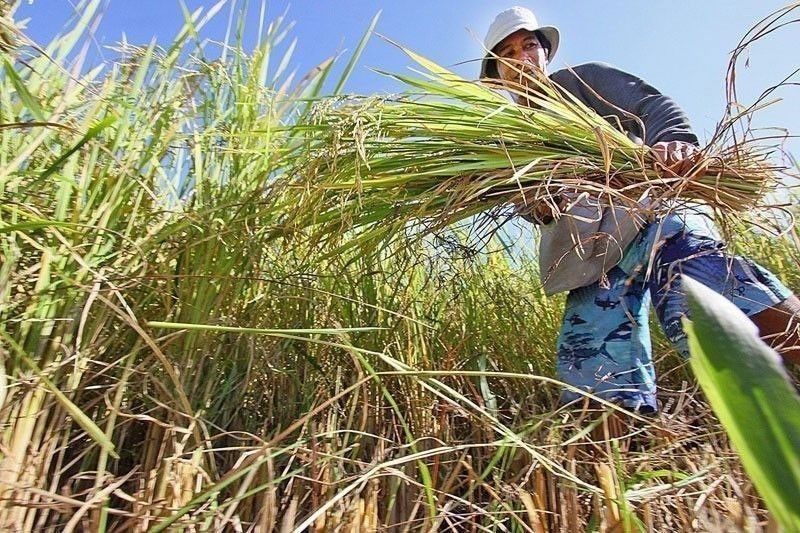Philippines sees challenge of limited arable lands

MANILA, Philippines — The Philippines faces the challenge of having limited arable lands and growing population to meet its rice self-sufficiency targets.
Being an island nation, the Philippines has limited arable lands compared to major rice producing countries such as Thailand and Vietnam, making it difficult to become rice self-sufficient, according to International Potato Center (CIP) regional director for Asia Samarendu Mohanty.
“The Philippine yield is very good. The growth rate in the last two decades has been very good, one of the highest in the world. The problem is the conjunction growth has exceeded your production growth…The Philippines is an island nation. Your limitation is in terms of how much land you can bring into production. That’s the major constraint in the past four to five decades,” he said.
Coupled with the continued population growth, the Philippines’ goal of attaining self-sufficiency might be a long shot.
“I don’t think you’ll be self-sufficient, with the population growth you have. You still have to address it through imports. And if you have to address through imports, then you have this uncertainty that you are facing now,” Mohanty said.
Latest data from the Philippine Statistics Authority (PSA) showed the country’s self-sufficiency ratio (SSR) in rice fell to 77 percent last year from 81.5 percent in 2021.
This is also the lowest in 24 years or since 1998 when the SSR for rice was at 72.1 percent, based on historical data from the PSA.
In a separate interview, Agriculture Undersecretary for policy, planning, and regulations Mercedita Sombilla agreed that the country has limited arable lands which limits rice production.
“Our arable land is only about a third of Vietnam and a fifth of Thailand…Another thing is they have the Mekong Delta which is very fertile,” she said.
But the government is implementing measures and programs to increase the country’s rice yield per hectare.
“What I mentioned earlier, and that’s one of the (things the) National Rice Program is going to be doing, is to shift another dry season crop to a dry season. So, we will have two dry season crops…because we can control the weather and with proper irrigation, we would be able to increase our production, have higher yields during those times,” Sombilla said.
Moreover, DA Undersecretary for rice development Leocadio Sebastian said the Philippines has already come a long way in terms of rice yield per hectare.
“if you look solely at the physical area, yes we will find it hard to be self-sufficient. But if you look at our current yield level, we’re still far from saying it is impossible to achieve. We still can, but we have to exert a lot of effort,” he said.
Under the Masagana Rice Industry Program, the DA is focusing on just one to 1.5- million hectares of irrigated lands to maximize production by shifting the main cropping season to the dry season, which was done in Vietnam and Bangladesh.
“So I said we should do the same thing here in the Philippines, that we move our main production (to the dry season) with irrigated areas so that when a typhoon comes and it rains, we won’t have to worry,” Sebastian said.
This is currently being discussed with stakeholders because this will entail a lot of changes when it comes to planting season.
“Our partners right now are the irrigators association and the National Irrigation Administration (NIA) because collaboration is important to achieve this,” Sebastian said.
While raising local production through provision of quality seeds, fertilizers and irrigation is a good thing, Mohanty said the Philippines also needs to look at the constraints which it cannot address.
An option the Philippines could look at to meet its rice self-sufficiency goals is to invest in lands in other countries.
Mohanty said this is a practice being done by other nations like India for a number of commodities such as rice and soybean.
“Many Indian companies are investing in African rice production there. There are Indian companies producing there and exporting somewhere else. This is being done.If the Philippines will take this route, the government needs to step in and broker an arrangement for this kind of investment, ‘’he said.
“I think the government has to facilitate. The private sector will enter with assistance from the government so it has to be ensured that they can bring back the rice into the country. The government has to play a major role in that. But the investment can come from the private sector,” Mohanty said.
Sebastian agreed that this is a global trend, but this will still entail private interests which could impact prices locally.
Instead, the government is looking at bringing in foreign investments in the rice sector and having a technology dissemination to improve production.
“I also want to open up the access to technology for the local agriculture sector through private sector investments. They should not be limited to those being developed by the Philippine Rice Research Institute and International Rice Research Institute,’’ Sebastian said.
- Latest
- Trending




























